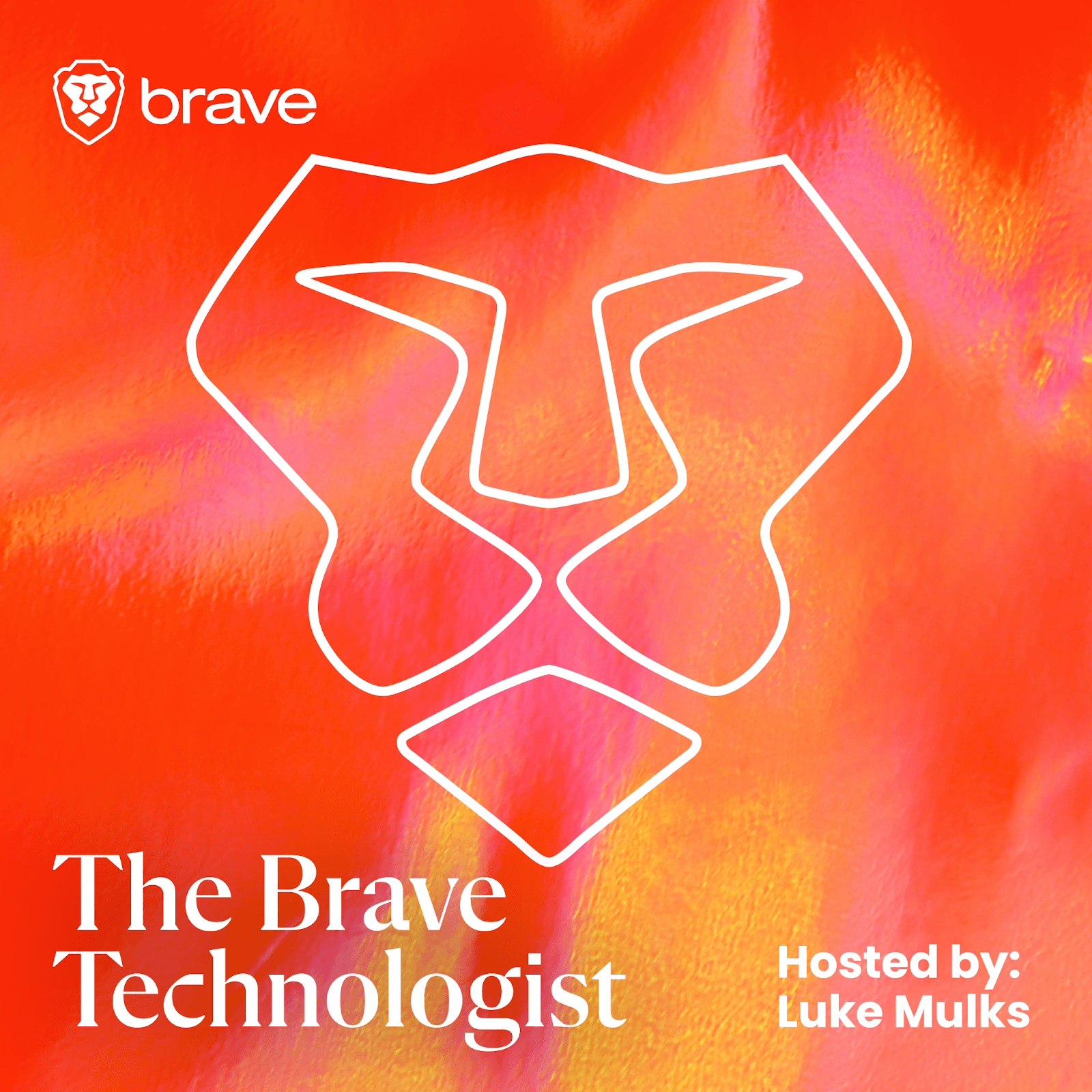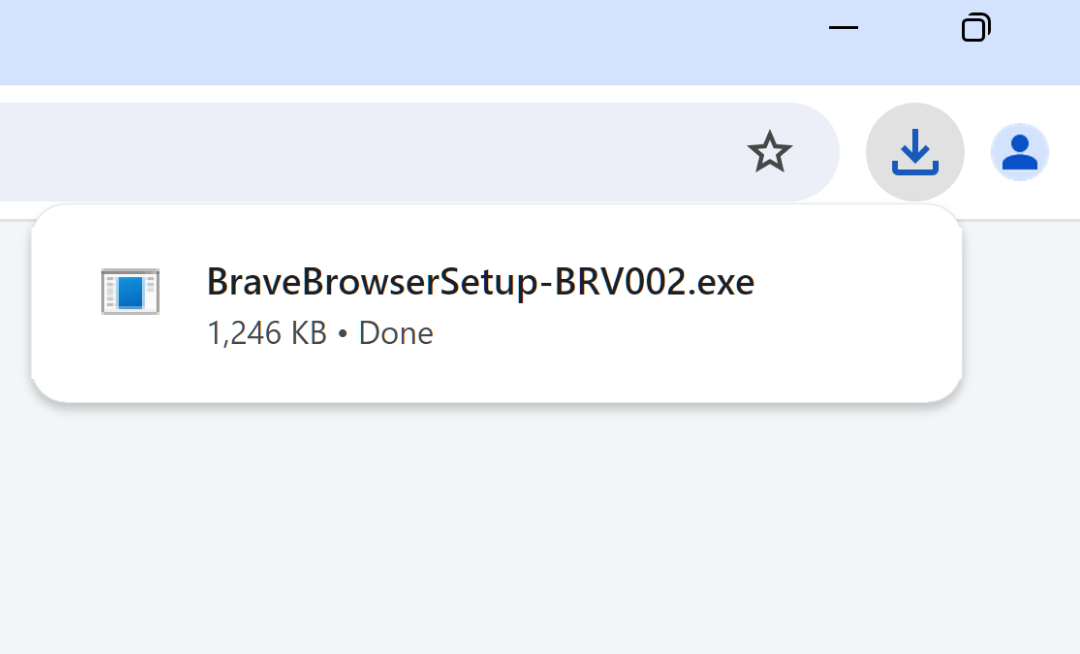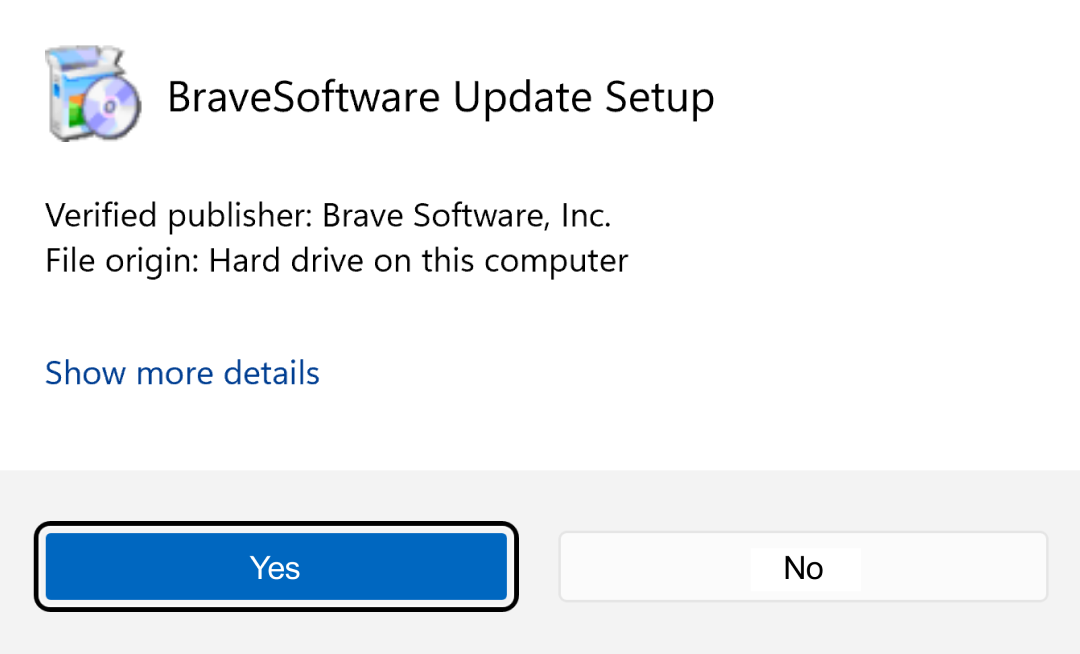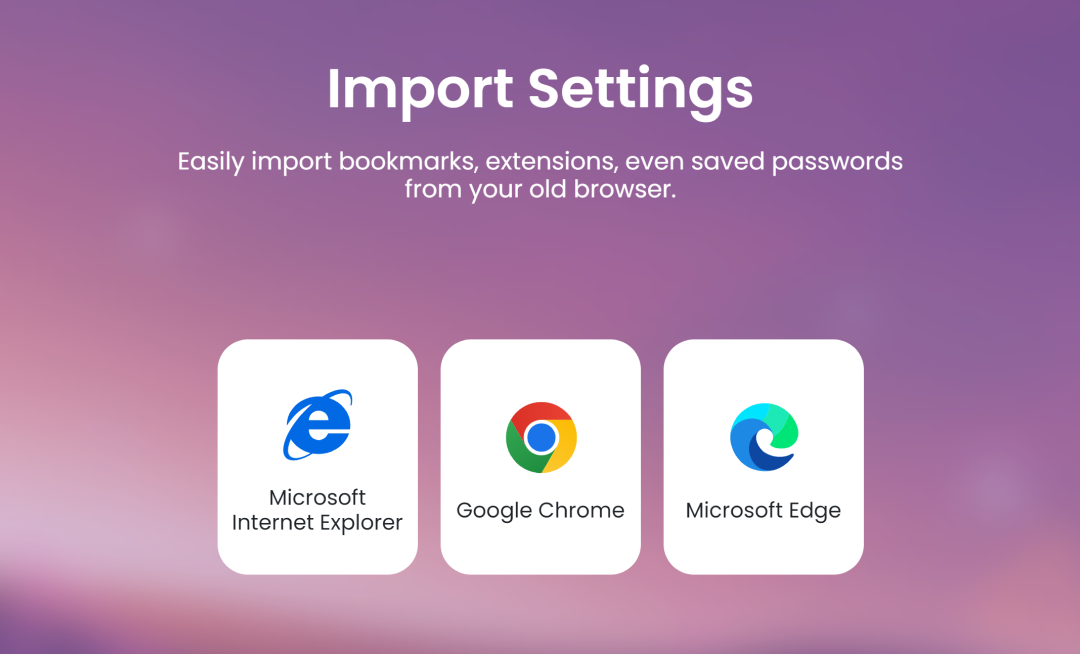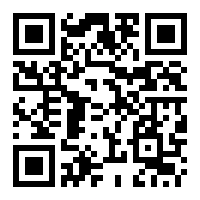Tokenized Finance: The New Era of Global Investing
Luke: [00:00:00] From privacy concerns to limitless potential, AI is rapidly impacting our evolving society. In this new season of the Brave Technologist podcast, we’re demystifying artificial intelligence, challenging the status quo, and empowering everyday people to embrace the digital revolution. I’m your host, Luke Malks, VP of Business Operations at Brave Software, makers of the privacy respecting Brave browser and search engine, now powering AI with the Brave Search API.
Luke: Before we get started, a quick disclosure. The subject matter I’m covering in this episode is purely informational and the opinions and viewpoints are my own. The information covered in my personal views on this topic are not financial advice or endorsements. Please do your own research before making any financial decisions and consult your accountant, financial advisor, your priest, or any other trusted people in your circles before making any financial decisions of your own.
Luke: Proceed with your own risk, do your research, have the accountability you need to make your financial decisions. Okay. With that out of the way, [00:01:00] what is this noise about tokenized finance? All about Some of these areas have been experimented and battle tested within the crypto space for years and are just now kind of clearing regulatory hurdles or advancing technically, or have been adopted by players and institutions in a way that make them actually scalable for.
Luke: Millions and millions of users to do, more everyday users to, take advantage of. There are a lot of different areas within the finance that tokenization will apply to. It’s almost endless. You can almost tokenize everything. I mean, there are a lot of people that throw that jargon around, but it’s true.
Luke: You can make a tokenized representation of almost anything. but for the purpose of this video, or this episode, you know, being an introduction to the topic, I’m just gonna zoom in on two main areas that are easy to relate, or two to three. Yeah. First area is stable coins. Stable coins are getting a ton of attention lately.
Luke: The US Congress recently passed a Genius Act, which it finally kind of sets the rules to the road of what institutions [00:02:00] can have clear guidance on, like how they can incorporate and adopt stable coins. It opens things up for businesses. It makes it a lot more clear, and, and there’s been a lot of uncertainty around this.
Luke: That’s kind of been a hindrance to the space. by having, The United States financial system have those rules of the road with the regulators and getting that actually passed into law. it’s going to kind of open access and make it that much easier for institutions and businesses to adopt this technology.
Luke: So it’s pretty big deal. How do they work? How do stable coins work? Well, first, you know, stable coins are generated using smart contracts on a blockchain similar to other tokens and coins. Staple coins are different though. They can, they’re specifically programmed with specialized functions that in are intended to kind of use a, deal with a total circulating supply of something, but also to like programmatically keep the value within a certain narrow range.
Luke: So think about it this way there’s the ability, you think of a dollar as a dollar, but if something’s 100 cents. To [00:03:00] 1.00001. That’s a narrow enough range to technically say it’s a dollar and mentally model it as a dollar without it kind of going and, and becoming unstable. Those smart contracts kind of keep that in that range and you’re able to do that with smart contracts and programming like you are with other crypto assets and, and other things in this space.
Luke: Smart contracts are administered by stable coin issuers. And there are different kinds of stable coins. There are algorithmic stable coins, which are. A type of cryptocurrencies that use algorithms and smart contracts to maintain a stable value. These assets rely on mathematical formulas and automated supply adjustments to regulate their value.
Luke: They’re a little more complicated, a little harder to kind of wrap your head around, and a lot less popular than collateralized stable coins. So we’re gonna focus on collateralized stable coins because they’re the most popular and they’re easiest to metal model for an intro episode like this one. So collateralized stable coins are designed to maintain a stable value [00:04:00] based on a collateralized asset.
Luke: For example, the most collateralized stable coin Most of them are pegged to the US dollar. The issuer of the stable coins administers this a smart contract and they hold collateral backing the stable coins that are issued. One-to-one for the circulating supply. The smart contract for the stablecoin is programmed to maintain that stable range that we were talking about, which can be 0.99 to a dollar in 1 cent, and it basically holds mince and burns enough stable coins in the supply to maintain the peg with the amount of collateral that’s on hand.
Luke: So as people buy in. The issuer will buy more treasuries as collateral to back the stable coins that are minted as people exit, stable coins are burned because the pool is getting smaller. This is happening. People are coming in and out of the system all the time. So it’s kind of a constant.
Luke: Minting and burning [00:05:00] and the stablecoin issuers that generate revenue and make money off of holding those collateralized assets and generate the interest bearing yield from those assets. So, for example, with dollars back stable coins, these issuers will hold treasury builder US treasuries, right?
Luke: And, and us, US treasuries have a yield that they generate. The, the stablecoin issuer will Keep that interest to generate yields revenue, and also stable coins make revenue or issuers make revenue off of the transactions. Some of them have a flat transaction fee very small. Others have a variable transaction fee for the size of the transaction.
Luke: It really depends on the specific stable coin that you’re talking about as each of ’em are programmed a little bit differently.
Luke: Again, for this one episode, we’re going to focus on US dollar backed stablecoin.
Luke: So why do people use stable coins? Stable coins aren’t new. They’ve been around in crypto space for years. Anybody that’s named to the crypto space is probably familiar with them. [00:06:00] Initially, stable coins kind of filled a void for traders because if you think back to when cryptocurrency and cryptocurrency trading first became a thing, what you would have to do is you would come into the ecosystem, you would buy Bitcoin with dollars through an exchange or an some type of an on-ramp provider.
Luke: It then when the price of Bitcoin fluctuated, if you wanted to either take profits from your Bitcoin, you know, and take the benefits of the upside value, you would either have to, you would have to sell it or just hold Bitcoin and hope that it kept going up. So you either convert back to dollars or you would have to uh, just hold on for the long term.
Luke: And converting it back to dollars is kind of taking. Something in the crypto ecosystem and then taking it back to the traditional, the fiat system. And so it’s not the most efficient thing. There are fees involved, it’s kind of clunky, et cetera. Exchanges would hold both dollars and crypto assets.
Luke: And, and you know, exchanges are basically go through licensing and, and have regulatory compliance requirements and all of that. [00:07:00] But all of that requires intermediaries and kind of the promise and hope and, and ethos of the crypto spaces to. Disintermediate and have, you know, decentralized finance and all of these things that don’t require, you know, intermediaries to get between you and what you’re trying to do and the value of your assets.
Luke: And so, as crypto developed so did stable coins. You know, Ethereum became a thing. People could start to experiment with tokenization. You started to see stable coins enter the market and they filled this great void because as asset prices go down, people could swap their Ethereum or Bitcoin in the near term for dollars and or US backed stable coins.
Luke: And when they, the prices would start to go back up, they could buy back at a low and then be within the ecosystem. But the idea here is that. Stable coins actually give the flexibility. You’re, you’re speaking the same language. You’re, you’re not trying to take a VCR and put it into a DVD player.
Luke: You’ve got, you know, these two things. they’re [00:08:00] interchangeable. Both are fungible I mean, types of, tokens. they’re programmable similar to how other assets are in the crypto space. So it really, it makes for a very efficient. Very quick to settle method of getting back to that dollar value, and so.
Luke: It became as it, it kind of started out of this place of like trading and then as decentralized finance kind of emerged, defi protocols started to use it for other things like, you know, automated market making and for defi protocols so people could actually like, you know, lock our interest and, and do all sorts of other things in the defi space with stable coins in addition to volatile crypto assets, which is pretty cool.
Luke: at the same time, you started to see adoption in parts of South America and in Africa, in countries where the fiat asset, the, the national currency is devalued and there’s inflation and people that are not necessarily earning a ton of money to begin [00:09:00] with. The, the value of that money to earnings going down.
Luke: So what you started to see happening is, is a broader adoption of both peer-to-peer and POS systems for, you know, everyday types of transactions. Started to use stable coins more, and a lot of it was like, you know, tether on Tron, but you’d start to see emerging markets where stable coins were being adopted in a much more practical way.
Luke: And also. For the purpose of doing, you know, cross-border payments and remittance and transferring value from point A to point B. Which is a really clunky process to do. I think, you know, a lot of us in western countries that have access to the financial system, they think, you know. Why do I need to worry about this?
Luke: I have, you know, virtual money basically with a debit or credit card in my bank. I don’t need care about all of this stuff. No one’s making payments with stable coins in my country. This is even a real thing. The world is much bigger than Western finance in western world. And, and when you’re talking about crypto and you’re, and, and the internet and more broadly, [00:10:00] this is a global network.
Luke: You’ve got global access to information. Having global ability to transact financially globally is like a huge thing. Countries that are at a disadvantage. Much of the world does not have access to banking or, you know, the merchant or credit system or anything like that. Or if they do have access to it, they’re in places where it is very expensive or there are huge risks to privacy and other things where, you know, governments are being intrusive, et cetera.
Luke: it’s not the same. And as we’re seeing with ai, as we’re seeing with information, if you are not on a more level playing field or you don’t have access to the tools in this global economy and global world that we’re in. That other countries have, your country is at a disadvantage. And as technology becomes more and more advanced, and as financial technology becomes more and more advanced, the countries that don’t have access to the financial system are at a greater and greater disadvantage.
Luke: And so there’s an [00:11:00] equalization in fact here if we want to have a globally competitive world where but also like, you know, for startups, for innovators, for. Having, part of the beauty of what we’re doing in tech is that people are building all over the world. And so there’s a great ability to open up the world to finance, open up the ability for new startups to do new things in new places in the world, make it easy get rid of a lot of the barriers that have been a huge disadvantage for a lot of the world through it by doing this.
Luke: In addition to the fact that not only for individuals has, does have some efficiency and, and open up access, but banking system’s clunky. You’re, you’re dealing with a, a pretty legacy system. They’re starting to see the benefits too. If you think about how wire transfers, and I think there’s a former episode with Austin Campbell, it’s worth taking a look where he kind of steps through the whole process of a banking wire transfer and how it hops from bank to bank.
Luke: And a lot of the times there’s insurance because you might not have. The money actually end [00:12:00] up from point A to point B. It’s a really antiquated system. And so banks have started to see, hey, you can have instant finality with with public verifiability on a blockchain that’s cryptographically secure and do it for very, very low cost.
Luke: And so the banking and institutional space is also adopting this because it’s an upgrade. These things are upgrades, like you don’t have to fall back on, trust me, bro. Or. Many of those rating agencies that said that financial instruments were grade A when they were grade F or worse you know, you don’t have to rely on that anymore when you have something that’s publicly verifiable or a system that has better integrity, which is what this whole system is fundamentally.
Luke: So, it’s not just with everyday users, it’s also with, you know, finance and business and, and all of this. And it’s still very early, but, but stable coins are, have been growing. Huge. And so, you know, not only that, I mean like the numbers are, are wild. Just to kind of put it into perspective, right, the, [00:13:00] the use is totally skyrocketed.
Luke: In 2019, the total circulating supply of stable coins was basically $2 billion. In 2025, the total circulating supply of stable coins is $208 billion. The Stablecoin circulating supply has grown an average of 28% year over year. The total transfer volume hit $27.6 trillion in 2024, surpassing the combined value or the combined volume of Visa and MasterCard transactions in 2024.
Luke: This is not a small fringe thing. We’re not talking about meme coins. We’re casinos. We’re not talking about pet rocks. $27.6 trillion of transfer volume in 2024. Visa and Master Bar combined did not make that much in 2024. I have that much transfer transfer volume in 2024. This is wild. This is huge.
Luke: These numbers are [00:14:00] massive, so. We’re opening up access to the world. We’re, we’re kind of, this is another building block in democratizing finance and you know, untapping unlocking a lot of that innovation and really upgrading the world financial markets, which is super exciting. The other end of this too, so that’s stable coins, you know, and, and it’s, it’s early We’re, we’re closer than you think. And really interesting to watch this as somebody that’s been in this space for so long, to see how we’ve gone from, you know, very, very narrow use cases to a reality where the hurdles you get. On a PayPal or Venmo trying to send something. And anybody that lives in Canada and friends that are there, coworkers that are there trying to send money across borders there are still places where it requires filling out a piece of paper in 2025.
Luke: If you think about it, you know, we, we, a, we created the ability to have adopt brave domain and we, we only shows on [00:15:00] May 20th as of July 3rd. We’ve over 7,000. Do brave domains have been registered? I can send stable coins or, or bat or crypto assets from. My dot brave domain to Joe Do Brave or any other dot brave domain.
Luke: So what you can see here happening potentially is like the ability to have an unstoppable in of global Venmo or PayPal, where you can send somebody. Funds across borders at a very, very low cost. And unlike Venmo, where by default when you send something to your friend, everybody sees it. Or if you are one that happens to, you know, be politically active.
Luke: More recently, if you look at what happened in, in Canada with the trucker protest, you know, people’s funds were frozen for politically protesting. And There’s a lot of parts of the world where why are these institutions we’re [00:16:00] supposed to have the ability to protest, why are we getting shut down?
Luke: And, and so having the ability to send funds in a human readable way with a, with a. Crypto domain, it’s like it is ripe for introduction to the broader space. And it’s on people like brave and and, and other builders in this space to make it as easy as it is to send money over Ven Venmo or PayPal or even make it easier.
Luke: And we’re finally at a point where this is possible. And so it’s a really exciting time. Now we’ve kind of covered stable coins. I’m gonna go a little bit into another area that’s been getting a lot of attention of tokenized equities because, you know, stable coins are kind of a way to think about like, I’ve got, cash in my wallet or, or whatever I can, get things spent by spend and all that good stuff.
Luke: Tokenized equities are another area that there have been some recent announcements on that’s super interesting and it’s a whole new unlock and I’m gonna go into that a little bit. But before I do that, I’m gonna kind of like segue into that by looking at, almost the inverse of that. in 2024.
Luke: [00:17:00] You started to see a lot of noise around these crypto ETFs and crypto ETFs in a way are the inverse of tokenized equities. you’d have the, the antiquated like system of finance that we all transact in every day. The legacy system where, your financial advisor. Might be a smart fella but does not know about, backing up their keys or is not used to buying and holding crypto assets.
Luke: And if you think about the environment that we’ve been in, where there’s been this regulatory uncertainty around cryptocurrency and all these things of the past, you know, four, six years financial institutions didn’t have a very easy time providing exposure. And at the same time. You saw Bitcoin go, you know, from $300 in 2016 up to, over a hundred thousand dollars now.
Luke: And so, Bitcoin as a store, values become a huge thing and, and broadly accepted. One in the financial industry and, also like other crypto assets have been in crypto in general, so. What’s a way that you could [00:18:00] provide crypto price exposure to financial advisors and people that buy and trades equities.
Luke: In a way that doesn’t require them to actually go get a crypto wallet and hold something or, or go get a Coinbase account and ETFs were a great way to do that. And so an ETF is basically, you have an institution that would collateralize like a lot of crypto, so they would custody or have a, have a custodian custody.
Luke: huge amount was just. Use Bitcoin for the sake of a simple explanation. so an institution would, buy up a bunch of Bitcoin and then go and submit an application registration for an ETF for the Bitcoin that they custody and they would issue shares for the ETF of representing the Bitcoin that they custody and make those shares available for financial advisors, for anybody that you know, goes through the regulated system to have price exposure without having to hold it.
Luke: And so that’s, you know, the ETFs are kind of like a good warmup to this idea of tokenized equities because it’s the [00:19:00] opposite of it. You’re kind of getting crypto exposure to more of the traditional finance market. Tokenized equities are the opposite of that, so tokenized equities. Instead of playing by the, the playing the old game where you’re, you’re kind of trying to introduce products or mechanisms into the, the legacy financial system.
Luke: What, what tokenized equities are doing are giving people in the crypto space or using cryptocurrency or, or blockchain technology as a way and, and providing exposure to equities and those equities markets. From crypto and blockchain technology. So instead of having it to where you’re issuing shares in a market of a cryptocurrency asset, you’re an issuer can.
Luke: Cus whole collateral of equities. And for the sake of simplicity, let’s just say like, let’s say that a a company like a Robinhood wants to make tokenized equities of Tesla. So they will [00:20:00] custody Tesla stock and then they will basically generate tokens of representative of those equities and, and start to issue tokens out.
Luke: So you could have a. A tiny piece and a token that of that stock that they’re holding, it gives you the price, exposure and exposure to the value of the equities without. Actually buying it, the equity yourself through a broker and, and all of that. So what you’re doing is you’re tokenizing it. So you could have fractional equity exposure without having to like go through the whole process.
Luke: And, and again, I, I think, you know, do we care? there’s, Fidelity apps, there’s ways to buy stocks, right? Think about it more broadly. So if you’re saving your money, you know, in another country where you don’t have access to these financial markets, but you buy Nike shoes and you want to buy Nike stock, or you really love what’s going on with Tesla and you wanna buy Tesla stock, but you don’t have access to that, or maybe you don’t have enough to buy a share of the stock, right?
Luke: Like even if you do have access, well if you go to, [00:21:00] with tokenized equities, you can buy a fraction of that. With the funds that you do have, you can do it instantly and you can do it through you know, a a, a really fast way of, of, of doing it on, your crypto wallet. And so you get the efficiencies that the crypto and blockchain technology bring with the global access that this is going to do.
Luke: So if you think about it, you’re basically opening the world up to the access of equities markets. And if you look at. The equities market globally. You know, the s and p you know, what has been a driver or a massive store of value in the economy and equities have been it, right? Like, everybody’s putting money into 4 0 1 Ks.
Luke: Well, if, if you’re in our system playing. within the parameters of it, that’s it is established, your, your employer can do this for you or you can, you know, get a financial advisor. But if you’re not in this country, if you’re elsewhere, you don’t have that same level of access. Well, well tokenized equities give you the benefits of that [00:22:00] exposure instantly in the same way that using Defi does.
Luke: and that’s a huge change. That’s a huge course change. That’s a huge amount that the world is huge. Billions of people will have access. To this equities market, like it is massive. It’s a massive change. It’s a massive shift and it’s super early. we’re just seeing very, very early versions of this stuff, but the potential here to open up these markets and, and to, open up the value potential for everyday people that maybe wanna start to, you know, have the same level of access that they see their friends online have.
Luke: the power of this technology is how it, it opens up and, and makes this technology efficient and accessible to more and more of the world that doesn’t have access to it, and the haves and have nots even within, the United States or western countries. You, you see this, this, this tale of two cities going on, right?
Luke: Like, and. These are [00:23:00] tools that can give more and more people access easily to get a piece, to start from somewhere you know, to start to build value. So many people feel like they play by the rules and work hard. Everybody like, and still can’t seem to get ahead or get a foot in the door.
Luke: And, and a lot of the times it’s. It’s either there’s a knowledge gap or a financial divide, or not enough to meet some minimum, like if you think about it too, like people might say, well, like just become an accredited investor in these things or, or whatever. Because can tokenize private equity too, right?
Luke: Like, those requirements, they have financial requirements. They’re still a toll tollgate and you’re too broke to access it. These things are changing the game. You can give people access to the upside. and if you look at the income inequality and these are, pop button words, but whatever, I mean, like, if you look at the, the uphill battles that a lot of people have and, and if you really are proponents of [00:24:00] these free market systems or, or you know, capitalism or whatever, I mean, like if you come from, not the greatest walk of life and, and you want to get a level up, this technology’s gonna give people access that, that wanna learn about it, that want to use it. You know, we’re at a point where the UX for these things is getting better and better and better to where.
Luke: If it can be as easy to, you know, get a piece of Tesla exposure as it is to send my friend, money on Venmo, then you’re opening up an entire world of users, not only globally, but also within your country that didn’t have that access because they’re not as up to speed on this as you are, and not everybody is, but like.
Luke: Why not give them the upside, like, why not give your neighbor the ability to earn a little more and and have a little bit of better quality of life? And, uh, this might sound too, corny or whatever, but like, these are power tools. AI’s a power tool. most of the valuable things that I’ve learned in my own career have been things that I’ve [00:25:00] learned.
Luke: On my own through these tools, through the internet, through trying things and the amount of people that are gonna be able to experiment and, open up new worlds with these technologies is gonna be huge. And so, you know, we covered a lot here. Um, But you know, any of these solo episodes are, are kind of fun for doing that.
Luke: And, you know, if there’s demand, if people want to, to go into more detail on whether it’s algorithmic stable coins or other types of tokenized finance, you know, or financial elements, yeah, I’d be happy to kind of do more. I’m, I’m gonna have more guests on around this too, so we can go get in the weeds in different areas.
Luke: But, you know, there’s a lot of this stuff buzz in the news and there’s a lot of confusion. People saying, oh, it’s all cbdc and it’s not, but at the same time, you have. Kind of, you know, the European banking commission kind of making us DBDC. So like, there’s a lot of confusion around these things out there.
Luke: But, but I think that, you know, I hope that this video can kind of be a good first step. This, this, this episode could be a good first step and, and a good entry into what this all means and like at a high level. And then, you [00:26:00] know, from here we can kind of drill down and get deeper and get more involved as we go.
Luke: And, you know, I hope you all enjoy the the episode and, I hope you all enjoy the guests and more content to come on this stuff. But until then you know, I’ll see you all online and see you on the next one. Take care.
Luke: Thanks for listening to the Brave Technologist podcast. To never miss an episode, make sure you hit follow in your podcast app. If you haven’t already made the switch to the Brave browser, you can download it for free today at brave. com. And start using Brave Search, which enables you to search the web privately.
Luke: Brave also shields you from the ads, trackers, and other creepy stuff following you across the web.


